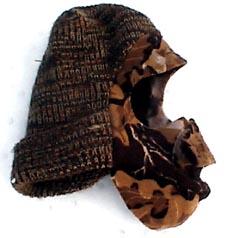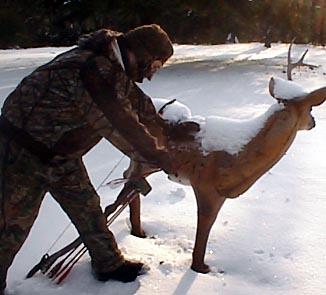Bowsite.com
The Nation's Leading Bowhunting Website
 By Pat Lefemine
By Pat Lefemine
The clothing system I am going to explain has been based on experience after years of frozen hands, frozen toes, too much bulk, and lots of sweat. The system I will be explaining in this segment is for temperatures below 30 degrees and primarily for minimal exertion activities like treestand or ground blind hunting. This is my personal system based on my tolerance for cold - it will not work for everyone. I have noted where an optional material can be used within this system effectively . The camo pattern is entirely your choice. We used RealTree Advantage and Skyline simply because it was readily available (not in the washer) when we photographed this. I also use Predator and Mossy Oak Breakup with this system as well (they were in the washer).
Staying Warm outdoors consists of these components:
| |
||
| |
||
| |
|
Any of the three components by themselves are easy. Finding the balance between them is what's difficult. For years I headed out in the dark with my five pairs of long Johns, two pair of socks, heavy boots, and insulated coveralls. After sweating for twenty minutes, my cotton undergarments were soaked and I was comfortable for ten minutes before I started shivering. I began experimenting with various combinations of clothing until I found the one that gave me the layering, the warmth, the moisture control, and the absolute freedom of movement I needed to shoot my bow accurately :
Layer 1 (long underwear, socks) Consists of Hydrastat Long Underwear pants, and long underwear turtleneck top. Socks are Thermax - Expedition Weight Substitutes - Thermax or Polypropylene, for long underwear, Wool for socks |
 |
Layer 1a - (Optional ) 1 Piece wool union suite - one size larger than normal. I use this when the temperature drops below twenty degrees. |
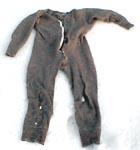 |
Layer 2 - (Down Vest) Critical - Heavy Down vest insulates core while allowing air to escape from the shoulders. This is the most important Piece to the system. Substitutes - Heavy Wool Vest - maybe. |
 |
Layer 3 - (Insulated Bib Overalls) Critical - When used over the down vest, provides twice the core insulation while still allowing air to escape from the shoulders. Substitutes - Wool bib overalls - I have two of these and they work great. |
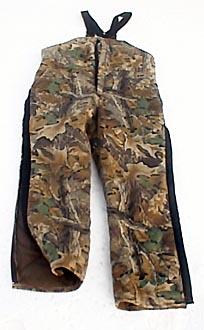 |
Layer 4 - (Light Cotton or fleece Jacket) Yes, I did say Cotton! This top is strictly to add a wind barrier to complete the package. I will use the fleece jacket when temperatures dip into the teens, otherwise its the uninsulated cotton jacket. The cotton jacket provides superior breathability to allow any moisture expelled out of the bib and down vest to rapidly dissipate through the cotton. Another key is to be sure you have ordered one size larger for the jacket. This will give you full range of movement without any bulk restrictions. Substitutes - Oversized lightweight wool shirt or scent-lok camo. |
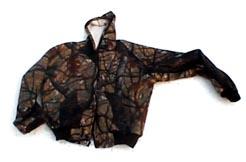 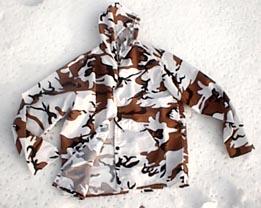 |
Head, Feet, and Hands Your head is vital to keeping in heat, or cooling down. I use a knit hat and face mask combination. For boots - only military issue bunny boots will keep my feet warm in cold weather. For gloves, I use a light pair of wool gloves (right) for temperatures above 20 degrees and the mitt pop-outs for below. Below 35 degrees, I keep a hand warmer in each pocket. Substitutes - Whatever works for you. |
|
| This system has taken me fifteen years to fine tune. But it gives me complete freedom of movement while allowing me to hunt all day in temperatures down to zero degrees. |  |
| |

